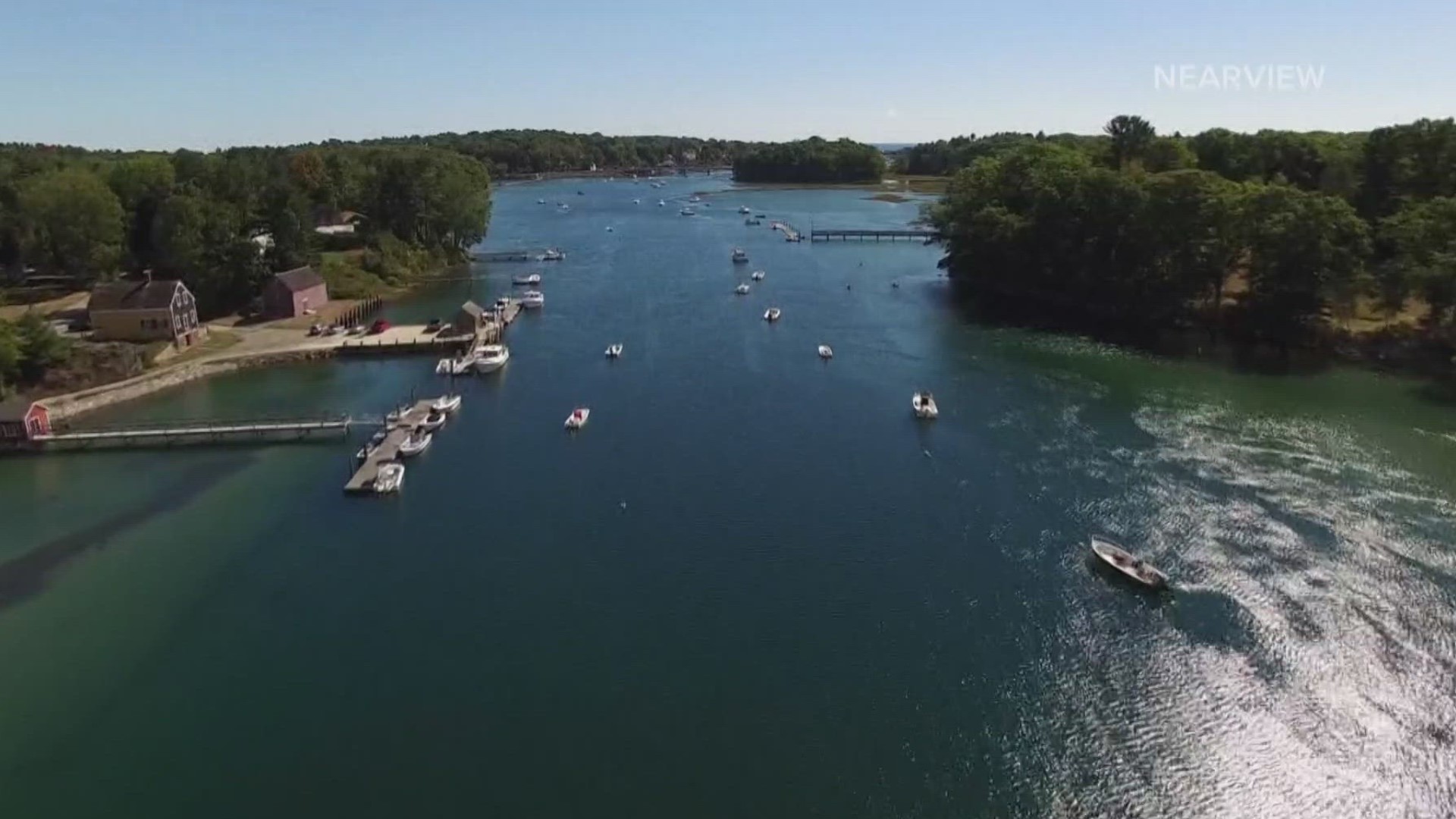YORK, Maine — In the September sun, the river itself was mostly empty of human activity. Schoolchildren stood on the dock of the John Hancock Wharf. Fishing boats sat idle, tied to a nearby working dock. There were sounds of lawnmowers from some of the homes along the shore of the lower river.
Jim Smith’s boat—our boat for the moment—motored from York Harbor, under the bridge, and then started upriver. Even the lower part of the river seemed a quiet, separate world from the harbor. But as we left most of the riverside homes astern, the river’s true nature became apparent.
The York River is about 13 miles long, running from a pond and several small tributaries to the sea. Despite that source, the river is tidal, and flows through woods and salt marshes, past farm fields, and the remains of colonial-era docks.
And aside from a few busy highway bridges, along much of its course, the York River is peaceful, beautiful, and largely unspoiled.
“You know you’re in the midst of something special, and I want to make sure my children can enjoy that, and their children,” said Joan LeBlanc, who has been one of the leaders of the river protection effort and is now vice chair of the York River Stewardship Committee.
That committee is the result of 14 years of work by local volunteers, which led to the Congress voting to designate the York as one of America’s newest Wild and Scenic Rivers. It joined an impressive list of about 230 other rivers, including the Allagash in Maine.
The designation includes both the river itself and the larger York River watershed, which covers about 33 square miles in the towns of York, Eliot, Kittery, and South Berwick. The official designation is as a Partnership Wild and Scenic River, meaning that management and oversight of the area will be a shared responsibility among the four towns and the National Park Service.
“I was blown away, just amazing to get out here and see what the river has to offer,” said Jim MacCartney of the Park Service, who took his first boat trip upriver earlier this year."
“Salt marshes, working waterfront, historic resources,” he said as he listed some of the many attributes of the river that drew the interest of the Park Service.
The years of research that led to the Wild and Scenic designation showed how significant the river is as a wildlife habitat, particularly in populous southern Maine.
“You have so many blocks of undeveloped land that are 500 plus acres, and that’s the landscape you need to support certain types of animals. Moose, bobcat, and others you wouldn’t expect in this southern Maine region. But they are here because of the habitat,” said LeBlanc.
She also noted a statistic that the watershed has more endangered or threatened species than any other part of Maine.
Paul Dest of the nearby Wills Preserve has been involved in the York River research from the start and said the whole ecosystem of the river and watershed is remarkable because of the location.
“In addition to salt marshes and forests and beautiful farms, there is an expanse of forest land here you won’t find south of Maine. So we have these large blocks of unfragmented forest, and we have this stunningly beautiful river, rich in natural resources and cultural resources, right here in southern Maine," Dest said.
The Park Service will not bring in rangers or a park superintendent or new federal rules to manage the river, said MacCartney. Instead, the NPS will provide some funding and guidance, if requested, to help the four towns and the Stewardship Committee manage and protect the river and watershed.
“Protect water quality, protect surrounding habitat. Try not to stop growth land development but make sure any development along this river is ecologically sound,” explained Judy Spiller, chair of the Stewardship Committee.
Spiller said there may need to be decisions by local planning boards or town councils or select boards, and the committee will advocate for those, as needed, she said. Spiller specifically mentioned current concerns about lawn chemicals from riverside homes threatening water quality. That issue, she pointed out, could involve both education efforts and possibly future action by the towns.
“We have the power of persuasion,” she said, noting that residents of all four towns had voted in significant majorities to support the Wild and Scenic designation.
York County is the second most populated county in Maine, and that growth pressure, all agreed, makes the urgent to preserve and protect the York River.
“We have intense development pressures coming up from Boston,” said Spiller, “And we need to preserve places like this, for our inner good and for the health of the natural world."

